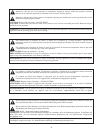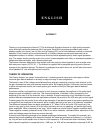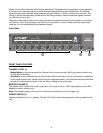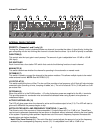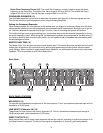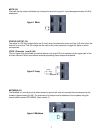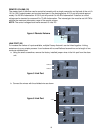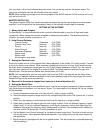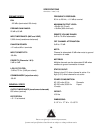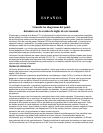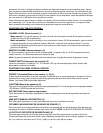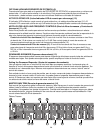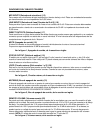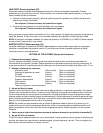
3
E N G L I S H
AUTOMIX™
Thank you for purchasing the Automix™! The Architectural Acoustics Automix is a high quality automatic
mixer with eight transformer balanced, Mic/Line inputs. Each Mic/Line preamp provides a gain control,
phantom power (mic inputs), low cut filter, activity/clipping LED, and a choice between manual or automatic
operation. Each channel can be muted externally or multiple channels can be muted externally via an
assignable mutebus. In addition, channels one and two provide adjustable priority and a signal processor
loop. The master section provides a gain trim control, three sweepable notch filters, a downward expander, a
transformer balanced output, and a remote volume port.
The Automix has been designed so that multiple units can easily be linked together to form a single mixer
with many more inputs (16, 24, 32...). The Automix is supplied with a plexiglass security panel to prevent
changes to the installers settings. The Automix is packaged as a stand-alone unit, but will also rack-mount
into a standard 19" rack with optional rack-mount kit.
THEORY OF OPERATION
The Peavey Automix is a classic "automatic mixer" combining several time proven techniques to deliver
maximum gain before feedback in an easy to setup and easy to use configuration.
The Automix uses VCAs (voltage controlled amplifiers) and gain computing circuits in each channel to ride
the gain downward as more microphones become active. By dropping the gain 3 dB every time the number
of active microphones double, the overall system gain remains at unity for ideal gain before feedback
performance.
A precision rectifier and logarithmic converter in each channel computes the amplitude of the audio signal
present at each microphone in real time. This channel amplitude, in decibels, is then compared to the
amplitude of the sum of all the channels, also in decibels. A simple computing circuit calculates the math-
ematical difference between these two amplitudes and feeds the product to the VCA as a gain control signal.
To better grasp how this works, let me offer a few examples. If we take the case of one person speaking into
a microphone, the amplitude in that channel will be virtually identical to the "sum of all channels" amplitude.
The difference between these two equal amplitudes is "0." When 0 dB is fed to the VCA control port, the
result is unity gain for that channel. All of the other channels, with no one speaking, will exhibit significantly
lower amplitudes. When compared to the "sum," which contains a nominal signal, negative numbers result.
These negative numbers, presented to the VCAs of non active channels, command further attenuation of the
noise and leakage present at these non active channels.
A second more interesting example is two people speaking simultaneously. To simplify this example, let's
assume they're both speaking with the same loudness. As these two sources are incoherent, i.e. not identi-
cal, they will sum as the square root of the sum of the squares or 3 dB more than either individually. When
each channel's amplitude is compared to this +3 dB sum, it's VCA will be commanded to attenuate 3 dB. As




